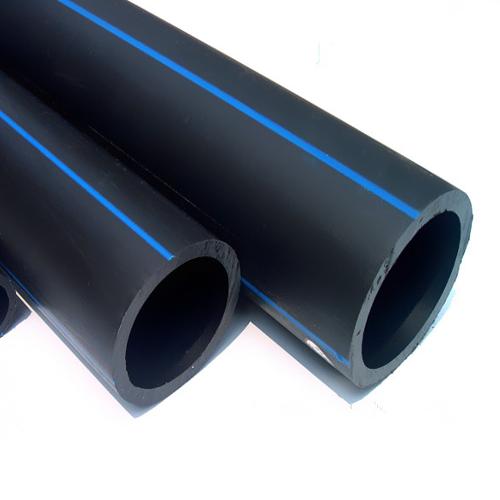HDPE is a plastic polymer of ethylene with a high density-to-strength ratio. High-density polyethene is idle to mould into pipes to carry various kinds of liquids, from sewage to drinking water.
Choosing the right size HDPE pipe for your project can seem like a daunting task. But it doesn’t have to be. With the right information and a little know-how, you’ll be able to select the perfect size HDPE pipe for your needs. In this article, you will learn about the different factors that you need to consider when selecting the right size HDPE pipe for your project.

The correct way to use HDPE pipes
High-density polyethene (HDPE) pipes have become a popular choice for a variety of applications. It is due to their durability, flexibility and resistance to corrosion and chemicals. However, to ensure their optimal performance and longevity, it is crucial to properly install and use HDPE pipes.
Compatibility
One of the most important aspects to consider when using HDPE pipes is compatibility. It is essential to ensure that the fittings and pipes are made from the same material and have the same dimensions. Otherwise, the joint may not be strong enough to withstand the pressure. It is also crucial to make sure that the fittings are suitable for the intended application. HDPE fittings come in different grades and thicknesses for different applications and requirements.
Installation Methods
HDPE fittings must be installed using the appropriate methods, including electrofusion, butt fusion and socket fusion to ensure a secure and leak-free joint. Electrofusion is a method of welding the fittings to the pipes by heating the fittings and pipes with an electric current. Butt fusion involves heating the ends of the pipes and fittings and then fusing them. Socket fusion involves heating the fittings and pipes with a special tool and then fusing them. Each method has its advantages and disadvantages. It is essential to choose the right method based on the specific application and requirements.
Proper installation
When it comes to the installation of HDPE pipe fittings, it is important to ensure that they are installed by a trained and qualified professional. Improper installation can result in leaks, leading to costly repairs and damage to the surrounding environment. Additionally, it is important to make sure that the fittings are installed by the manufacturer’s instructions and local codes and regulations. It is also crucial to inspect the fittings and pipes regularly. This is to ensure that there are no signs of damage or leaks.
Maintenance
Proper maintenance is essential to ensure the longevity of HDPE pipes. HDPE pipes should be protected from sharp objects and excessive pressure. This is required since they can crack or break if subjected to excessive stress. Regular inspections should be conducted to ensure that there are no signs of damage or leaks. If any issues are found, they should be repaired promptly.
Safety standards while buying HDPE pipes
High-density polyethene (HDPE) pipes are a popular choice for various applications due to their durability, flexibility and resistance to corrosion and chemicals. However, when buying HDPE pipes, it is important to ensure safety by considering several key factors.
Certification and standards
When buying HDPE pipes, it is crucial to make sure that they are certified and comply with the relevant standards. This includes certification from organizations such as the American Society for Testing and Materials (ASTM), the National Sanitation Foundation (NSF) and the International Organization for Standardization (ISO). These certifications and standards ensure that the HDPE pipes meet the required quality and performance standards. They also assure that the pipes are safe for use.
Material quality
It is important to ensure that the HDPE pipes are made from high-quality materials to ensure their durability and longevity. High-quality HDPE pipes are resistant to corrosion and chemicals, and they also have a higher tensile strength, making them suitable for various applications. When buying HDPE pipes, it is crucial to inspect the pipes for any signs of damage or defects. This is to ensure that the pipes are free from any contaminants or impurities.
Sizing and dimensions
The sizing and dimensions of HDPE pipes are important to ensure that the pipes are suitable for the intended application. The pipes should have the correct diameter and thickness to ensure that they can withstand the required pressure and temperature. It is also important to consider the length of the pipes, as they may need to be cut to size to fit into the desired location.
Manufacturer reputation
The reputation of the manufacturer is an important consideration when buying HDPE pipes. Reputable manufacturers have a proven track record of producing high-quality HDPE pipes that meet the required standards and certifications. It is also important to ensure that the manufacturer has a good customer service and support system in place, as this can be useful in case of any issues or problems with the pipes.
Buy HDPE Pipes online at L&T-SuFin
The right kind of HDPE pipes can depend upon various factors according to your requirement. At L&T-SuFin, you will find HDPE pipes for all your requirements and fits. It is a leading platform where you can buy industrial products online with ease. As experts in industrial products, L&T-SuFin wants to ensure you have all the information you need to make informed decisions about the products you purchase. Logistic and financial support is also provided for all the products, so you can be sure that you’re getting the best possible experience.
